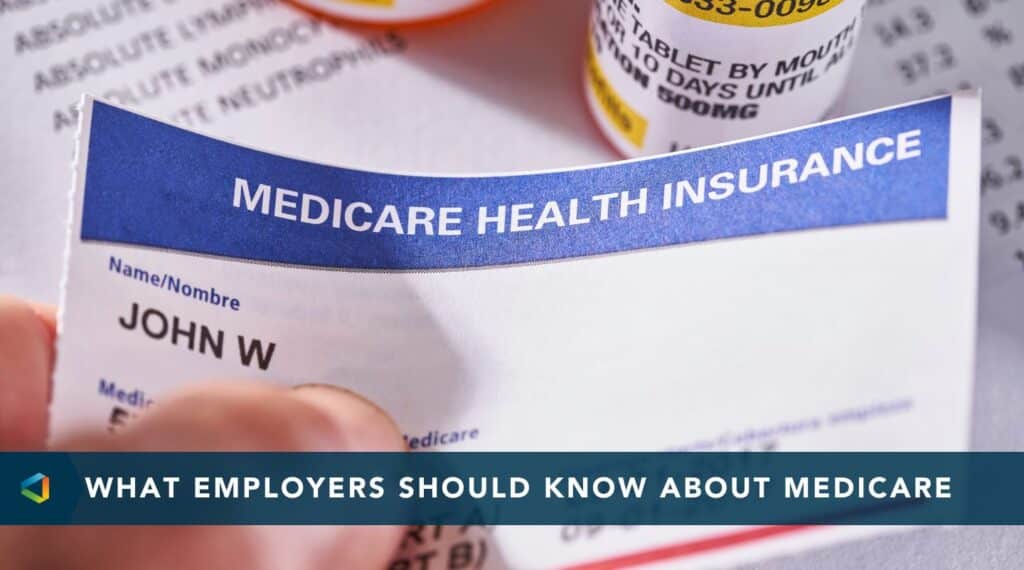The marketplace is full of news about the latest major companies to consolidate.
This trend, however, is not limited to the mega-corporations. Even small to mid-sized employers are seeing a spike in mergers and acquisitions, leading to a myriad of questions about how these changes impact the company’s employee benefits. Below is a list of common compliance questions that often arise in the midst of a merger or acquisition.
-
Which company is responsible for offering COBRA coverage after the transaction?
-
Selling group maintains a group health plan after the sale:
Selling group has the obligation to provide COBRA coverage to M&A qualified beneficiaries
-
Selling group discontinues any group health plan in connection with the sale:
Buying group has the obligation to provide COBRA coverage to M&A qualified beneficiaries if:
- The buying group maintains a group health plan and;
- The buying group is a successor employer that continues business operations of seller without interruption or substantial change.
-
Selling group maintains a group health plan after the sale:
Selling group has the obligation to provide COBRA coverage to M&A qualified beneficiaries
-
Selling group discontinues any group health plan in connection with the sale:
Buying group has the obligation to provide COBRA coverage to M&A qualified beneficiaries if the buying group maintains a group health plan.
-
In Connection with Sale:
Qualified beneficiary whose qualifying event occurred prior to or in connection with the sale
-
Prior to Sale:
Qualified beneficiary receiving COBRA as a result of employment associated with the assets being sold or the acquired organization
-
In Connection with Sale:
Qualified beneficiary whose qualifying event occurred prior to or in connection with the sale
-
Prior to Sale:
Qualified beneficiary receiving COBRA as a result of employment associated with the assets being sold or the acquired organization
-
The covered employee (or the spouse or dependent child) must lose coverage under a group health plan of the selling group after the sale:
The covered employee doesn’t have to lose their job, but no qualifying event occurs if the buying group is a successor employer and the employee is employed by the buying group after the sale.
-
Qualifying event occurs only if the covered employee is no longer employed by the acquired organization after the sale:
The sale is not a COBRA-qualifying event for the employee (or his or her spouse or dependent children), regardless of whether they are provided with group health plan coverage after the sale.
-
How will the transaction impact Affordable Care Act (ACA) applicable large employer (ALE) status and ACA reporting obligations?
-
What is the difference between an asset and stock sale?
- Asset Sale: The purchaser does not acquire an ownership interest in a second company but rather purchases selected assets, and/or assumes certain liabilities, from the selling company - buyer generally becomes responsible only for those liabilities and obligations of the business that it affirmatively agrees to assume.
- Stock Sale: One company purchases all of the stock or ownership interests in a second company, thereby acquiring the second company in its entirety or where a company purchases less than 100 percent of the stock of another company - purchaser takes all of the risks associated with the liabilities of the acquired company.
-
Do we have to notify employees of the impending transaction?
-
What should the seller consider if it is terminating its plan(s)?
Note: Buyer and seller may contractually allocate COBRA liability as part of the reorganization.
COBRA Principles |
Asset Sale |
Stock Sale |
General Rule: |
|
|
M&A Qualified Beneficiary: |
|
|
Qualifying Event in Connection with Sale: |
|
|
Seller Remains in Business
Seller Remains in Business After Purchase |
Determining Applicable Large Employer (ALE) Status |
Determining Who is Responsible for ACA Reporting |
Buyer is ALE and Seller is non-ALE: |
Buyer: Remains an ALE | Buyer: Report on employees employed under buyer’s EIN before and after purchase |
| Seller: Becomes an ALE upon purchase | Seller: Report on employees employed under seller’s EIN after purchase | |
Buyer is non-ALE and Seller is ALE: |
Buyer: Becomes an ALE upon purchase | Buyer: Report on employees employed under buyer’s EIN after purchase |
| Seller: Remains an ALE | Seller: Report on employees employed under seller’s EIN before and after purchase | |
Buyer is ALE and Seller is ALE: |
Buyer: Remains an ALE | Buyer: Report on employees employed under buyer’s EIN before and after purchase |
| Seller: Remains an ALE | Seller: Report on employees employed under seller’s EIN before and after purchase | |
Buyer is non-ALE and Seller is non-ALE: |
Buyer: Becomes an ALE upon purchase if controlled group has 50+ FT/FTE employees | ALE Buyer: Report on employees employed under buyer’s EIN after purchase |
| Seller: Becomes an ALE upon purchase if controlled group has 50+ FT/FTE employees | ALE Seller: Report on employees employed under seller’s EIN after purchase | |
| Non-ALE Buyer/Seller: No reporting |
Seller Dissolves
Seller Dissolves After Purchase |
Determining Applicable Large Employer (ALE) Status |
Determining Who is Responsible for ACA Reporting |
Buyer is ALE and Seller is non-ALE: |
Buyer: Remains an ALE | Buyer: Report on employees employed under buyer’s EIN before and after purchase |
| Seller: Remains a non-ALE upon purchase; Dissolved = 0 FT/FTE employees | Seller: No reporting | |
Buyer is non-ALE and Seller is ALE: |
Buyer: Becomes an ALE upon purchase if buyer has 50+ FT/FTE employees after hiring any of seller’s employees | ALE Buyer: Report on employees employed under buyer’s EIN after purchase |
| Seller: Becomes a non-ALE upon purchase; Dissolved = 0 FT/FTE employees | Seller: Report on employees employed under seller’s EIN before purchase | |
| Non-ALE Buyer: No reporting | ||
Buyer is ALE and Seller is ALE: |
Buyer: Remains an ALE | Buyer: Report on employees employed under buyer’s EIN before and after purchase |
| Seller: Remains an ALE | Seller: Report on employees employed under seller’s EIN before and after purchase | |
Buyer is non-ALE and Seller is non-ALE: |
Buyer: Becomes an ALE upon purchase if buyer has 50+ FT/FTE employees after hiring any of seller’s employees | ALE Buyer: Report on employees employed under buyer’s EIN after purchase |
| Seller: Remains a non-ALE upon purchase; Dissolved = 0 FT/FTE employees | Seller: No reporting | |
| Non-ALE Buyer/Seller: No reporting |
Generally, the employer does not have to notify employees of the impending transaction. However, the Worker Adjustment and Retraining Notification Act (WARN Act) requires certain employers to provide affected workers with 60 days advance notice of a plant closing or mass layoff. Employers are covered by WARN if they have 100 or more employees, not counting employees who have worked less than 6 months in the last 12 months and not counting employees who work an average of less than 20 hours a week.
If the seller will terminate its plan in connection with the transaction, there are several items it should consider, which include but are not limited to:
- ERISA Plan Terms Regarding Plan Termination
- Disposition of Plan Assets
- Handling of Disability Claims
- COBRA Liability
- Contractual Agreement with Carrier
- Providing Deductible or Other Plan Credits
- Plan Termination Date
- Process for Enrollment in Buyer’s Plan
- Retiree Liabilities
- Collective Bargaining Agreements
- Notice Requirements for a Material Reduction in Benefits or Termination
- Responsibility for Unpaid Claims
- Employee Mid-Year Election Changes
- Severance Agreements
- Form 5500 Filing




